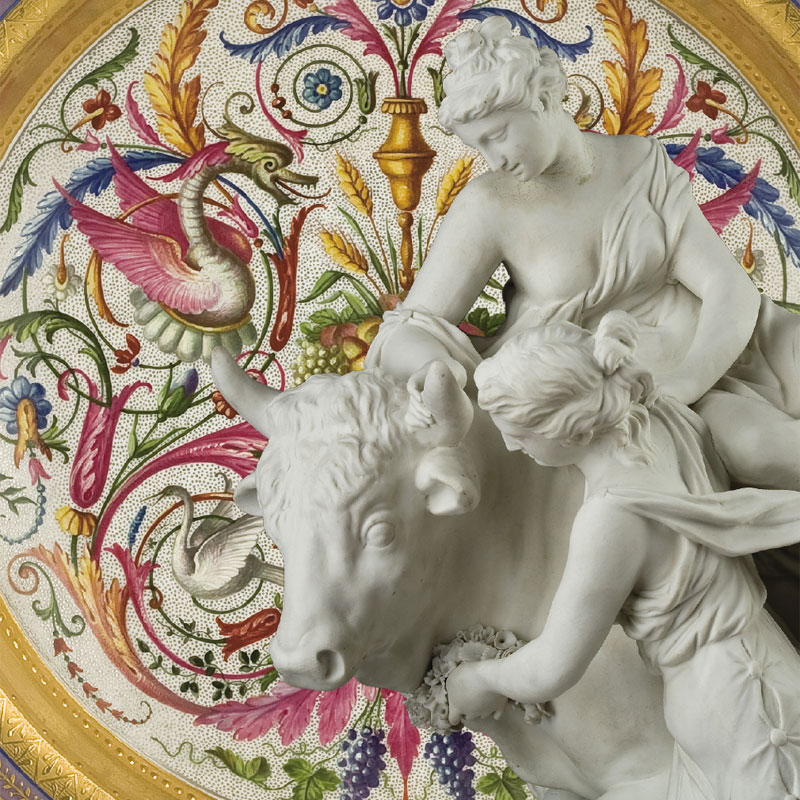| |
|
PRACHTWARE-SHOWPIECES. NEOCLASICAL PORCELAIN FROM THE MARTON MUSEUM IN ZAGREB
18 June - 9 November
Showpieces. Neoclassical porcelain from the Marton Museum in Zagreb
‘Prachtware’ (lit. ‘splendid wares’, i.e., showpieces) was the term used by Conrad von Sorgenthal, director of the Imperial Porcelain Manufactory in Vienna from 1784 to 1805, to describe his luxurious products which were distinguished by their superb quality and lavish décor.
In a new temporary exhibition, the LIECHTENSTEIN MUSEUM is showcasing a representative selection of Viennese porcelain dating to around 1800 from the holdings of the Marton Museum in Zagreb. Tableware, show-piece cups, déjeuners and biscuit porcelain figurines give an impression of the wealth of artistic products made during the Neoclassical era with their delicate ornamentation in gilded relief work, their elegant hues and astonishing miniature painting. Silver, glass, furniture and paintings from the holdings of the Marton Museum will also be included among the exhibits, providing associative accents to illustrate the aesthetic sensibility of this epoch.
A sense of decoration
It is particularly the objects used to decorate interiors around 1800 that reveal the main characteristics of contemporary attitudes to life that were affected by the profound social upheavals taking place at the time. Porcelain, which as a novelty had served the absolutist courts of the Baroque as an object of display and delight, became the precious vehicle of enlightened ideas and ideals during the Neoclassical age. Similar developments can be observed in other branches of the decorative arts. In this exhibition selected objects, like theatre props, provide the porcelain with a harmonious, at times surprising or even amusing mise en scène. Figurines of biscuit porcelain, which were mostly components of larger centrepieces with didactic intent, form a special focus of interest within the exhibition. In them Anton Grassi (1755–1807), modeller in chief at the manufactory, expressed his veneration for the sculpture of classical antiquity, which he had studied on a journey to Italy. The influence of his contemporary Antonio Canova (1757–1822) is also clearly evident; Canova visited the manufactory personally in 1805 and Grassi executed a bust of him later the same year.
The Marton Museum
The first private museum in Croatia, the Marton Museum was founded in the summer resort of Samobor near Zagreb in 2003. Its holdings include an extensive collection of porcelain from Vienna, Sèvres and St Petersburg together with paintings, clocks, Bohemian glass, silver and Biedermeier furniture from Vienna and Croatia. Its owner and director, Veljko Marton, is renowned as a collector far beyond the borders of his native country. It is his passionate approach and determination to make the collection accessible to the general public that has facilitated a process of cultural exchange and a revival of forgotten links between Croatia and Vienna, concerns which are also of foremost importance to the LIECHTENSTEIN MUSEUM.
|

